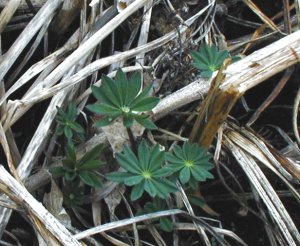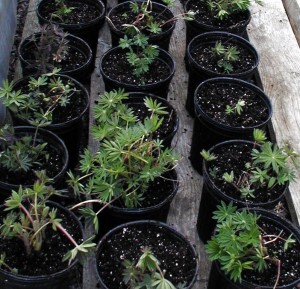


Lupines are some of the more hearty zone 4 perennial flowers we grow and we grow a lot of them for one good reason.
People really like them and they come back year after year, so lets talk about transplanting Lupines.
Lupines come in a variety of colors including blues, purples and lavenders, pinks and even yellows.
It’s fairly easy to start them from seed. The seed has a hard shell and it helps to scrape the surface of the shell a bit and it also helps to soak the seeds in water overnight.
However we have found what we feel is a better way.
If the seed stalks are left on the plants in the fall the seeds will fall to the ground and spring up every where as little lupine plants.
These little plants are well on the way when the snow is gone and the ground is just thawing. The trick is to get out and dig them up while the earth is still wet and soft from the melting snow. The roots can be very long, a foot or more, and if they become very hard to dig if left to grow deep.
In about an hour the other day I was able to dig up more than 30 small plants, and by small I mean of a size that fills a 1 gallon pot.
A small shovel or hand trowel and dinging with hand seems to work best. Pile them up and load them into a pail or wheel barrow. Keep the roots wet and out of the sun.
If potting them up it is best to get them into the pots right away. If the plants are going to be moved to another garden put them in a plastic bag with some water and transplant them as soon as possible.
New transplants should be kept out of the wind and direct sunlight for a few days. Make sure they do not dry out. We use a time released fertilizer in all of our potted perennials as well as a dose of low nitrogen fertilizer to promote good root growth.

Leave a Reply
You must be logged in to post a comment.